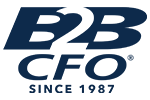
Finding Cash In All The Wrong Places 663
Posted on March 31, 2020 by Terry Eve
Most if not all businesses of any size can always use more cash. I am fond of saying “Even General Electric rations capital!” Why, because cash is a finite resource and cash is required to invest not only in the future of the business, but also to meet current obligations.
However, where do we “Find” cash? Particularly in this market, with businesses struggling and frequently operating at a loss, banks not be an option. And further, outside investment not only dilutes the investment of the founder and owner(s), it is the most expensive form of “Finding” cash. That is right, when you run a model regarding the actual cost of capital, it is most likely that additional equity investment is the most expensive source of cash. This is frequently overlooked because it does not run through the P&L as a cost.
So where else can we find cash? The company’s balances sheet! That’s right; you may have had it all along and just not know how to “unlock” the cash reserves in your balance sheet. Let’s look at a few key areas.
Accounts Receivable (A/R)
I have a client whose largest account has intentionally stretched their payment terms to 60 days in order to conserve cash. Many other companies are working to 45 – 60 days as well. And guess what, they probably didn’t ask you permission!
For example, if you have a company that has gross revenues of $3,650,000 this means you company averages $10.0 thousand per day in revenue. Assuming 30 day terms, your accounts receivable “Days Revenue Outstanding” (DRO) should be 30 meaning your balance in accounts receivable should be $300,000 (30*$10,000 per day). But if customers are stretching their payments, A/R may grow to 45, 50 or even 60 days. This means your A/R Balance will grow to $450K – $600K under these circumstances.
Ignoring the fact that an account receivable is a financial instrument that loses its value over time (meaning the increased potential for bad debts as a result of a growing A/R balance due to slower payments), you have become your customers’ bank! You now have cash flow in the amount of $150K to $300K tied up in accounts receivables above your standard terms.
Encourage your customers to pay to terms! Consider adding service charges! Perhaps consider early payment discounts 2/10 net 30, but be strict and don’t allow them to take the discount if they don’t comply.
Inventory
Inventory can grow just like A/R. Let’s say you normally carry $500K in inventory each month. Did you reduce your spend when business volume decreased? What is your inventory turn now?
For example, if you carry a $500K inventory and turn it 4 times per year, but business slows and now you turn it 3 times per year, you now have too much inventory for the current volume of sales. Add to that the occasional tendency not to reduce inventory purchasing as quickly as the decline in sales and you slow the inventory turnover to 2 times a year very quickly.
So in our example if inventory needs to be $375K to maintain an inventory turn of 4, but has grow to $750K instead at a turnover rate of 2, your business now has $375K in cash tied up in extra inventory. Add to that the possible risk of obsolescence, cost of insurance and other elements and you have substantially reduced the available cash in the company.
The Answer: Reduce A/R through better collections and focus on getting the money in the door and reduce inventory purchasing until the balance is in line with sale volume. A reduction of receivables and inventory flows directly into your cash balances, dollar for dollar!
Accounts Payable
This is the last area we will touch. Just like people are slower paying you, you need to look at your payment policies as well. Some companies pay ahead of terms, does yours? Do you really know?
If your electric bill is due on the 15th, do you pay it then or just “get it out”? Many companies, just “get it out”. So the first thing to look at is, are we paying anything ahead of when it is due?
The second area is key vendor relationships. Can you negotiate preferred terms? This may also require a higher credit limit. Can you negotiate improved / lower pricing? Note that I am not suggesting a unilateral decision to stretch terms, but rather getting key vendors to partner with you to help relieve some of your stress on cash. These business discussions tend to strengthen the ongoing relationships and improve vendor relations at a difficult time. And if vendors don’t want to work with you, consider other vendors!
Don’t know how to quantify the impact of these adjustments and implement the process necessary to achieve these goals? Your B2B CFO can help and that’s why we say: Cash. We help you get it. TM

